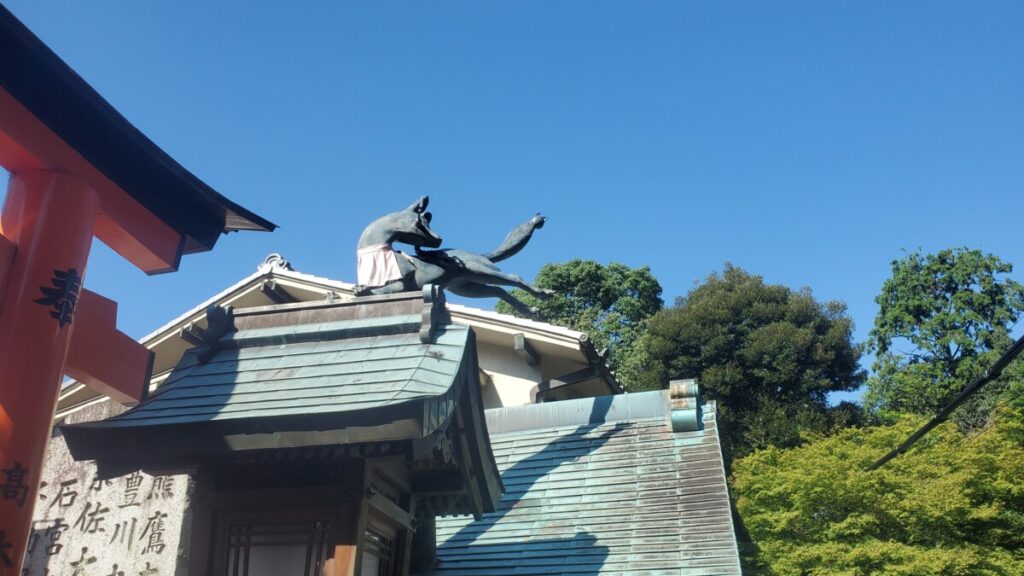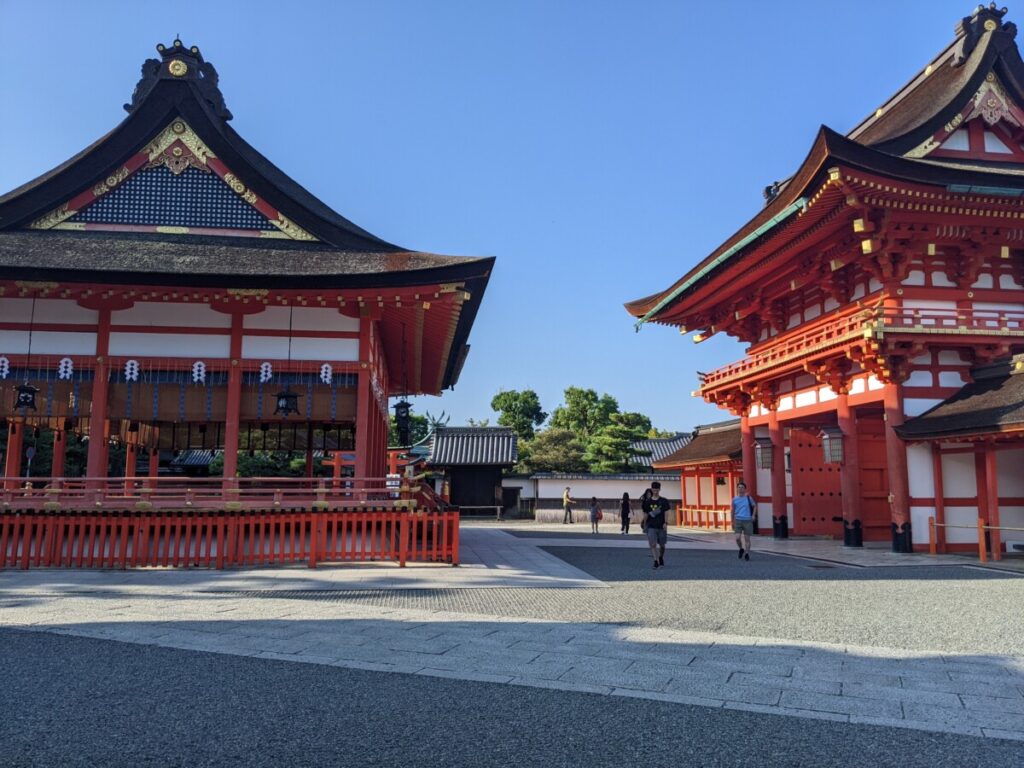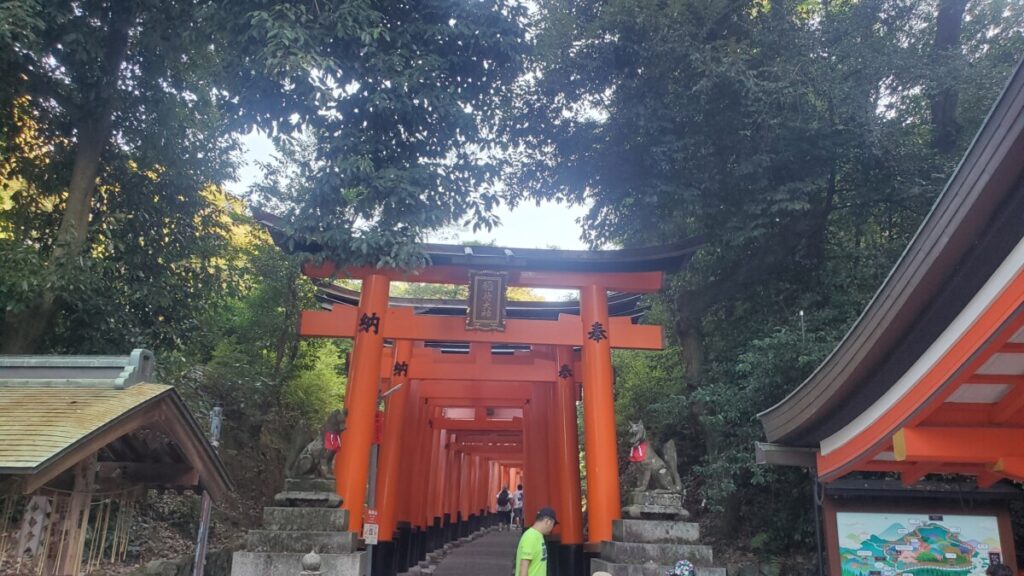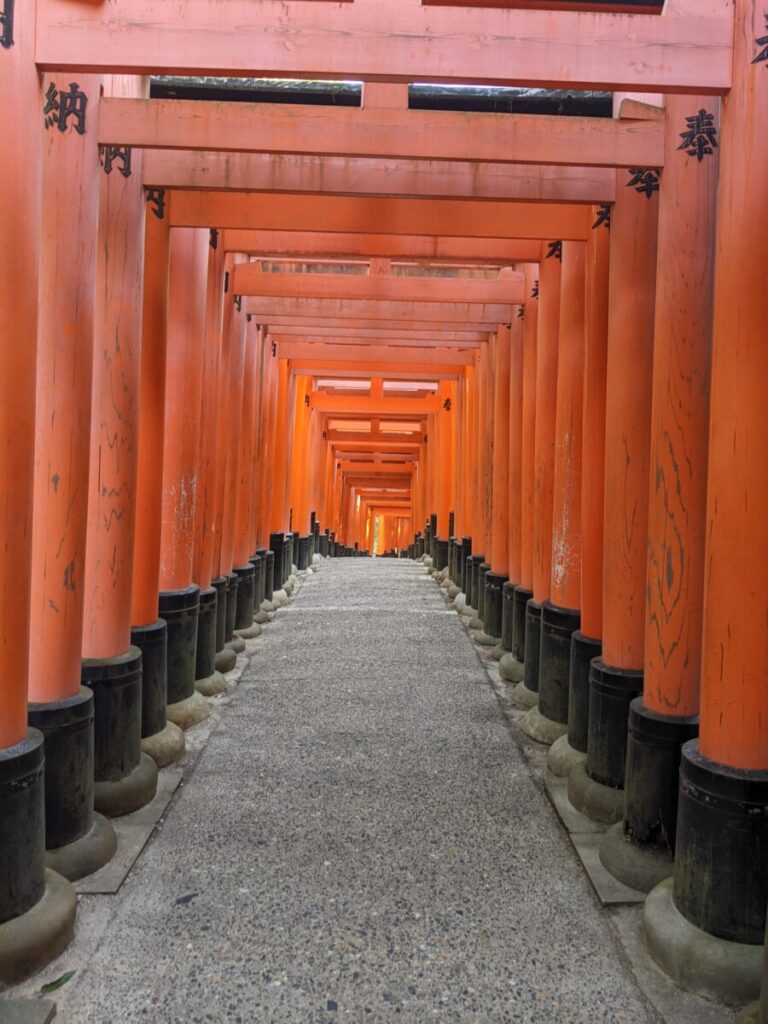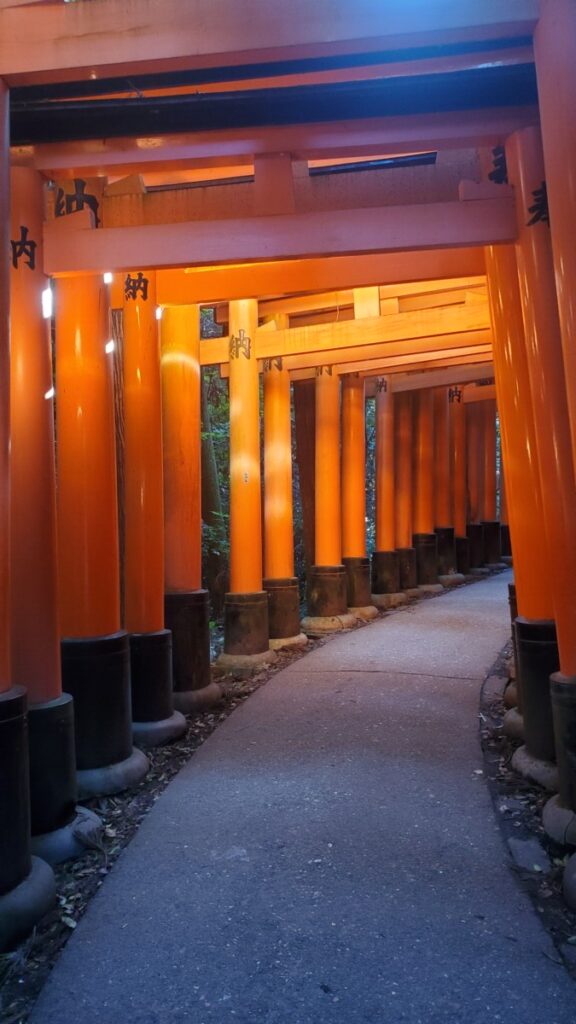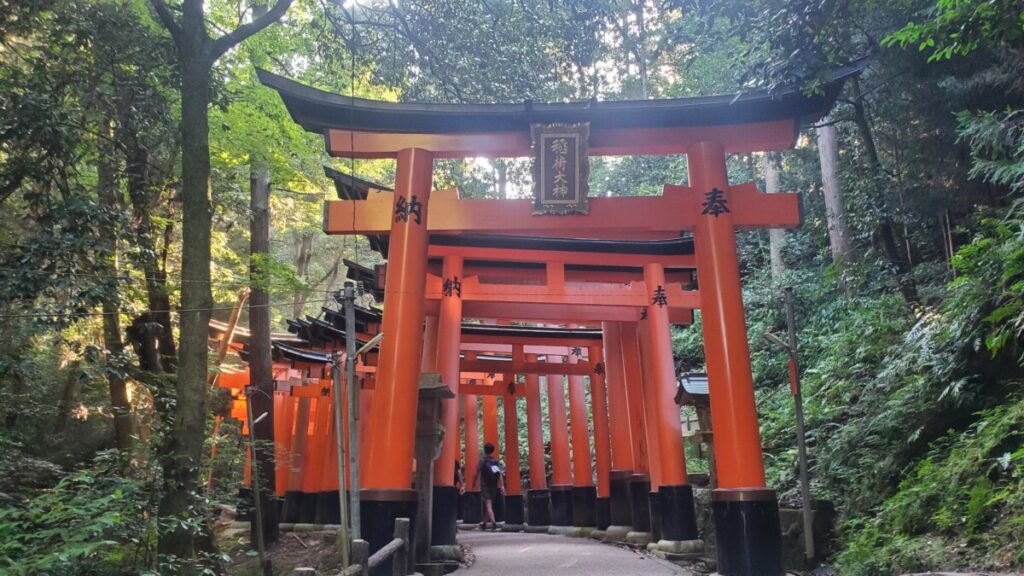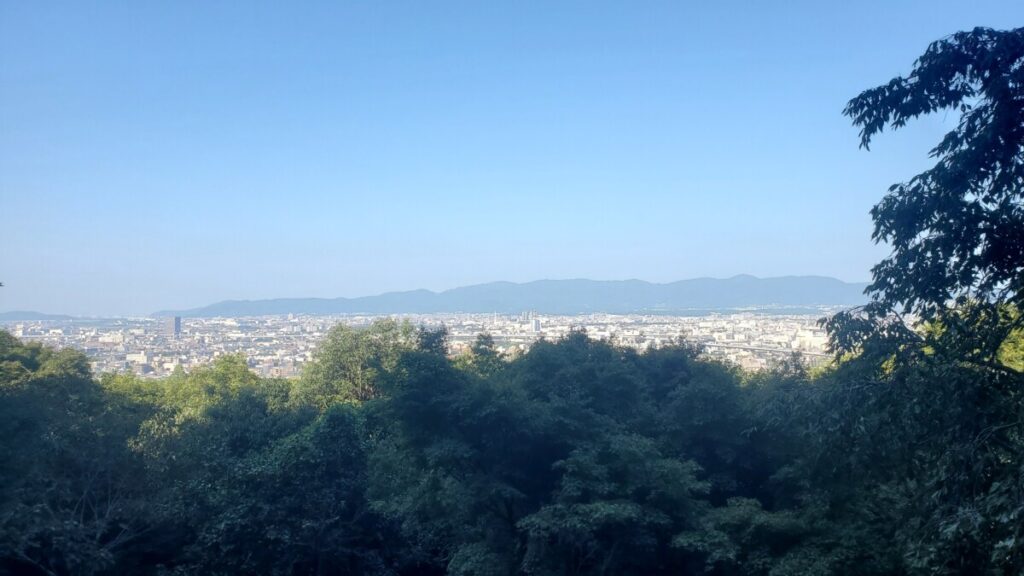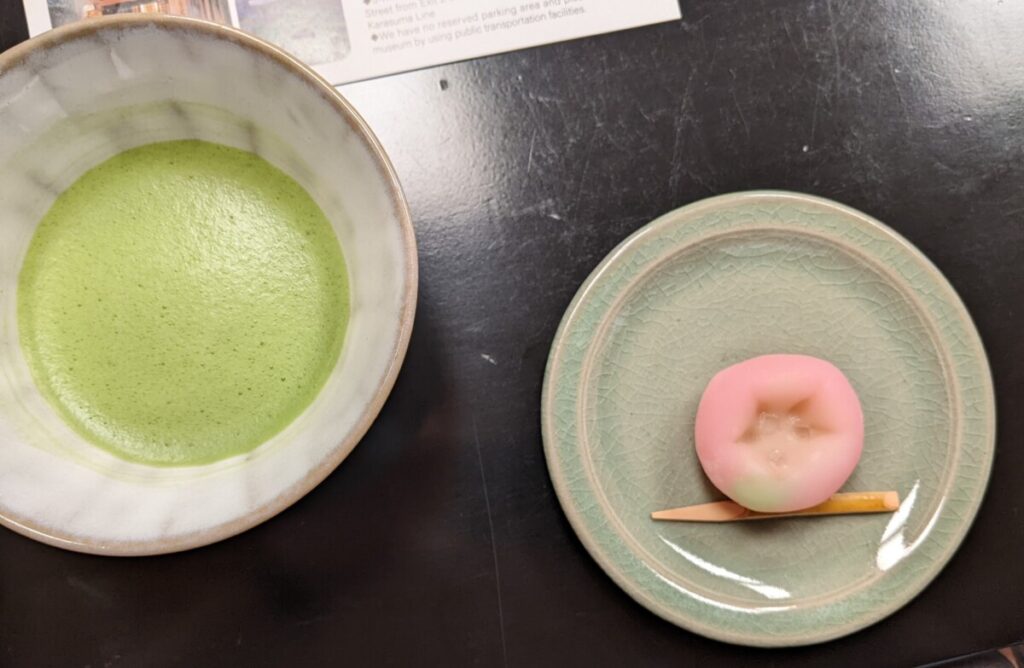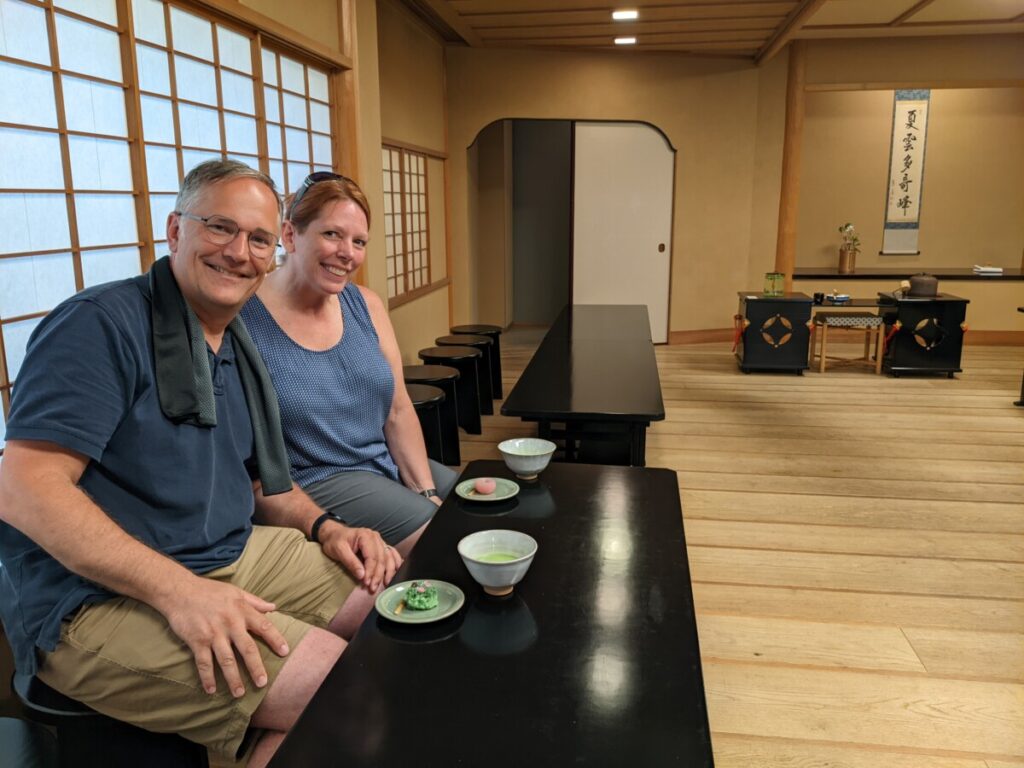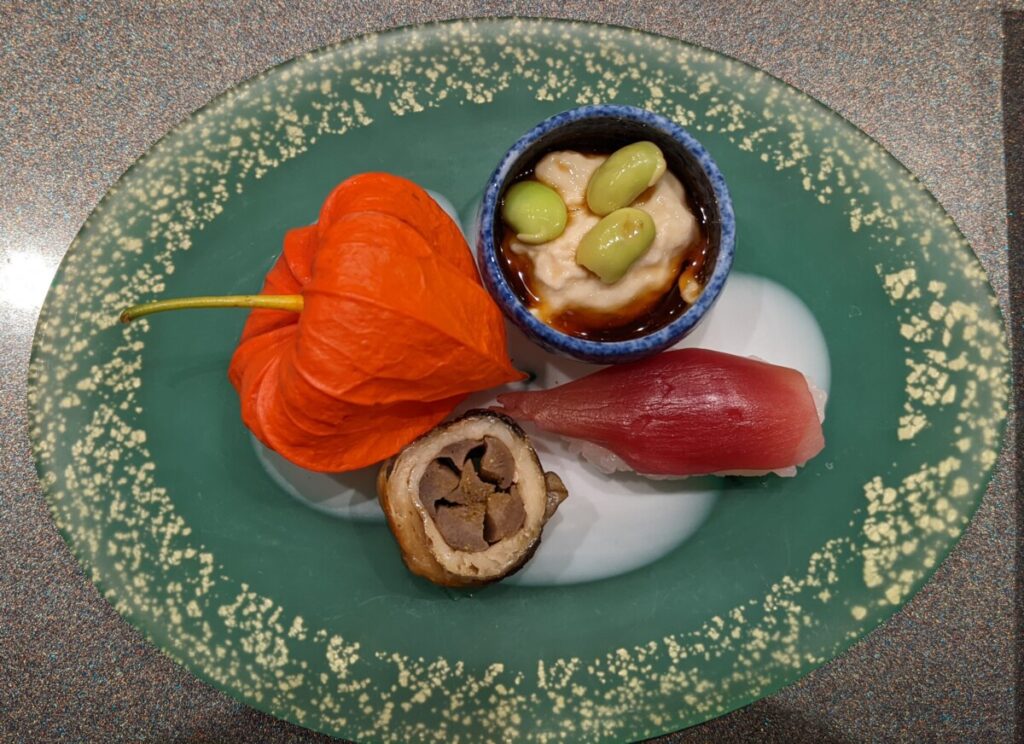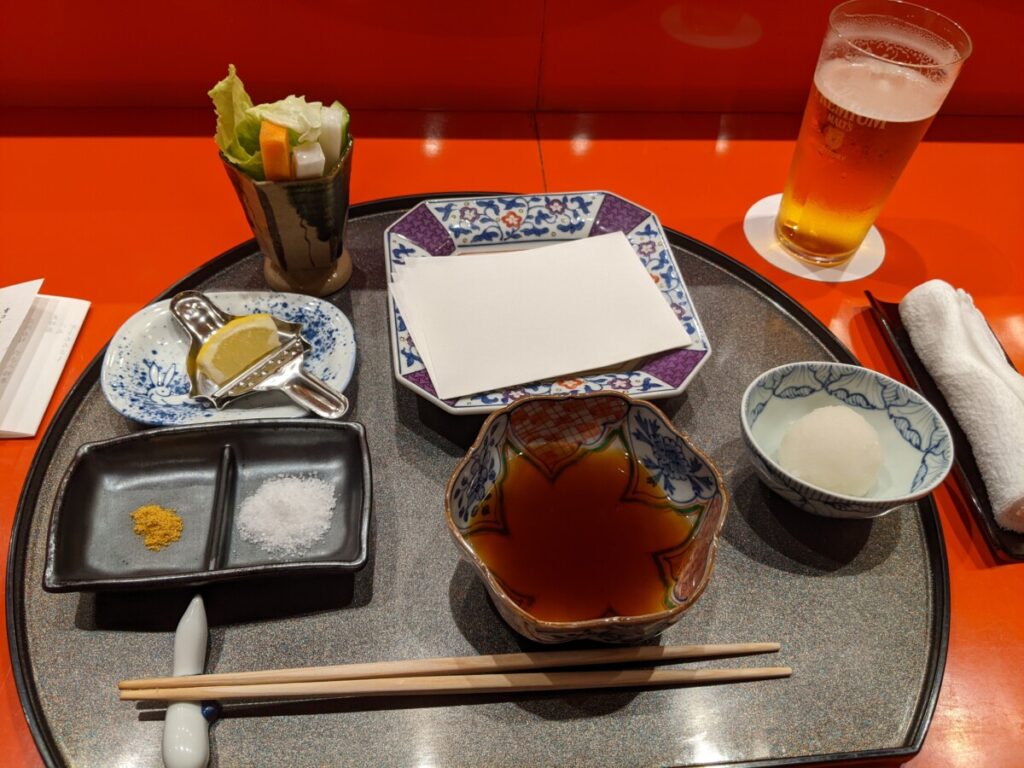We knew our planned destination for the morning of our third day in Kyoto would involve a lot of stairs. After almost suffering heat exhaustion at the monkey park, we decided to get smart and get an early start. And so we were off to Fushimi Inari, the head shrine for the deity Inari.
Inari is the kami of rice and agriculture (thanks, Wikipedia), but the servants of Inari are usually depicted as foxes. So you get fox statues everywhere. (Remember that Inari itself is NOT a fox, however.) Inari is an incredibly popular kami to pray to, and as such there are literally thousands of Inari shrines throughout Japan, including dozens of subshrines at Fushimi Inari itself.
The main buildings of the shrine are quite impressive, but they weren’t the primary reason we had hauled ourselves out of bed at six in the morning. Rather, that would be the senbon torii, or “thousands of torii” that straddle the paths up the mountain.
Spectacularly photogenic, these things. At 7:30 in the morning, we only had to cope with a few other groups, but even then we were tripping over people getting their perfect social media shots. They couldn’t detract from the overwhelming impact of the path, however.
The view from the top of the trail was pretty spectacular, and while we were up there, we witnessed a proposal to boot. (She said yes.)
We were also quite proud of ourselves for figuring out the secret code on the back of the gates. And by “secret code”, I just mean “Japanese traditional dates.” But we figured it out, with just a LITTLE help from Wikipedia to pin down which emperor was which.
By this point it was getting EXTREMELY warm, so we staggered back down the mountain and headed back into Kyoto for breakfast. Afterwards, we decided to check out the large temple complex we had passed in the cab the night before, since it was conveniently only two blocks north of our hotel, and both of those blocks could be walked underground where it was slightly cooler.
The temple complex in question is called Higashi Hongan-ji, and it is ENORMOUS. All of the publicity material for the Founder’s Hall in this complex claim that it is one of the largest wooden buildings in the world. Interestingly, I cannot find a single independent verification of this claim. However, I still believe it.
 The Founder’s hall (just under the cloud) is 50,000 square feet in size, and 125 ft. tall. It’s big. After staggering across the unshaded gravel courtyard which was approximately the temperature of the surface of the sun, we made it onto the porch of the temple and, removing our shoes, stepped into the hall. Shortly after we arrived, however, a service began, and we didn’t want to be disrespectful, so we didn’t take any pictures.
The Founder’s hall (just under the cloud) is 50,000 square feet in size, and 125 ft. tall. It’s big. After staggering across the unshaded gravel courtyard which was approximately the temperature of the surface of the sun, we made it onto the porch of the temple and, removing our shoes, stepped into the hall. Shortly after we arrived, however, a service began, and we didn’t want to be disrespectful, so we didn’t take any pictures.
The second hall, just to the left of the Founder’s hall, is nearly the same size as well, and there are a number of other buildings in the complex in addition. The scale is hard to appreciate from the pictures, but it was massive.
After this, we went to meet our friends for more okonomiyaki. There’s a great debate over whether Hiroshima or the Kansai (Osaka/Kyoto and evirons) region has a better version of the dish. We naturally couldn’t make up our minds without trying both. Verdict? They’re both good.
After lunch, we took the subway up to the Kyoto Wagashi Museum. Wagashi are traditional confectionary of the region, usually served with matcha tea. The museum was a single room, but it had some really impressive displays of preserved confectionary. Entire flower arrangements, birds, trees, and other bravura displays of artistry. Sadly, no photography was allowed.
Where photography WAS allowed was in the tea shop downstairs, where the museum docent served us matcha and our choice of seasonal wagashi. I think they speak for themselves in terms of appearance.
The flavors were also exquisite.
Frankly, we think the docent was a bit bored – we were the only other people in the museum the entire time we were there, and she went out of her way to show us the various other aspects of the tea room, including the decorations, the garden, and a neat musical instrument that makes sound by pouring water into a spring. She also took this picture for us.
After that, we considered going to visit another park, but it was just too ungodly hot. So we went back to our hotel to rest for a bit before joining our friends again for another gourmet dinner, this one consisting of tempura, and at a restaurant in the hotel in the train station itself.
After a plate of warmup treats,
we were presented with a selection of things to dip our tempura in, and the chef would make recommendations as we went along as to which dishes would be better dipped in which topping.
Finally, we waddled back to our hotel. I snapped this picture BEFORE dinner, but it seems a great way to end the entry.
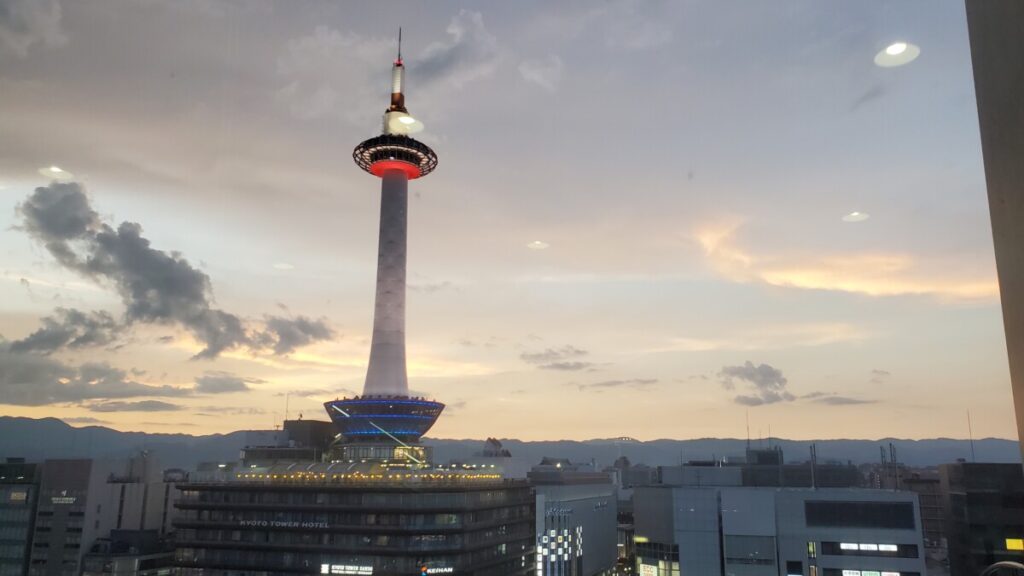
(There wasn’t a UFO invasion going on, that’s just the reflection of the station lights in the glass.)

